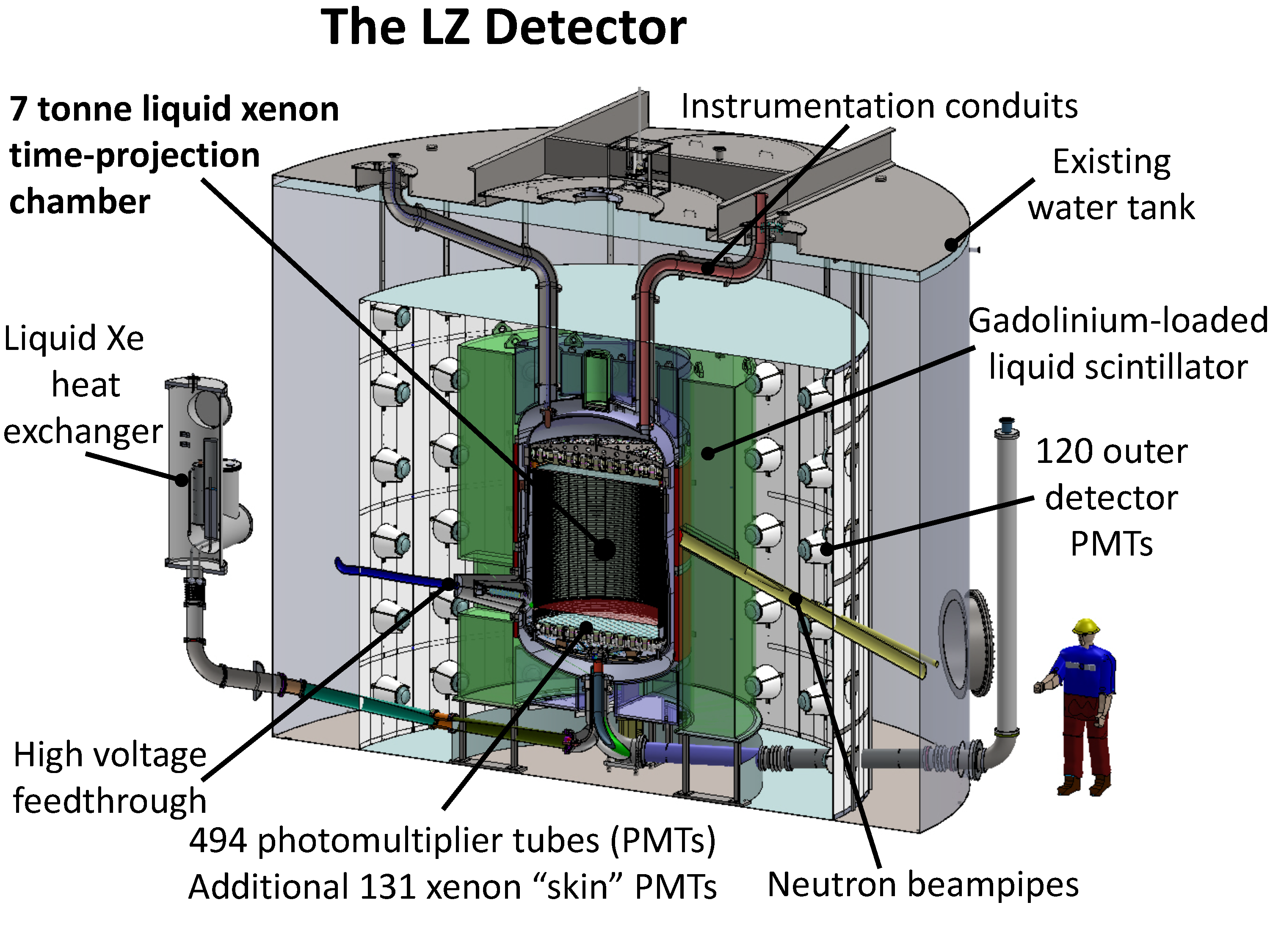 The LUX-ZEPLIN (LZ) experiment utilizes 7 tonnes of active liquid xenon to search for xenon nuclei that recoil in response to collisions caused by an impinging flux of dark matter particles known as WIMPs (Weakly Interacting Massive Particles). The experiment will be located nearly 1 mile underground in the Sanford Underground Research Facility (SURF) in Lead, South Dakota. The active liquid xenon is configured in a cylinder 1.5 meters in diameter and height, with an applied electric field to form a TPC (Time Projection Chamber).
The LUX-ZEPLIN (LZ) experiment utilizes 7 tonnes of active liquid xenon to search for xenon nuclei that recoil in response to collisions caused by an impinging flux of dark matter particles known as WIMPs (Weakly Interacting Massive Particles). The experiment will be located nearly 1 mile underground in the Sanford Underground Research Facility (SURF) in Lead, South Dakota. The active liquid xenon is configured in a cylinder 1.5 meters in diameter and height, with an applied electric field to form a TPC (Time Projection Chamber).
A recoiling xenon nucleus causes a prompt flash of scintillation light, followed by delayed flash of electroluminescence. The light signals are detected by 494 photomultiplier tubes, which are deployed above and below the liquid xenon. The central liquid xenon volume is surrounded by a thin, instrumented region of liquid xenon, an outer detector of gadolinium-loaded liquid scintillator, and a layer of ultrapure water, to identify and reduce false signals.

LZ utilizes 494 photomultiplier tubes (PMTs) for signal detection. The PMTs are 3” Hamamatsu R11410 with ultra-low background radioactivity levels.
We project that a 3-year run of the LZ experiment will achieve a sensitivity close to fundamental limits from the cosmic ray neutrino background.
